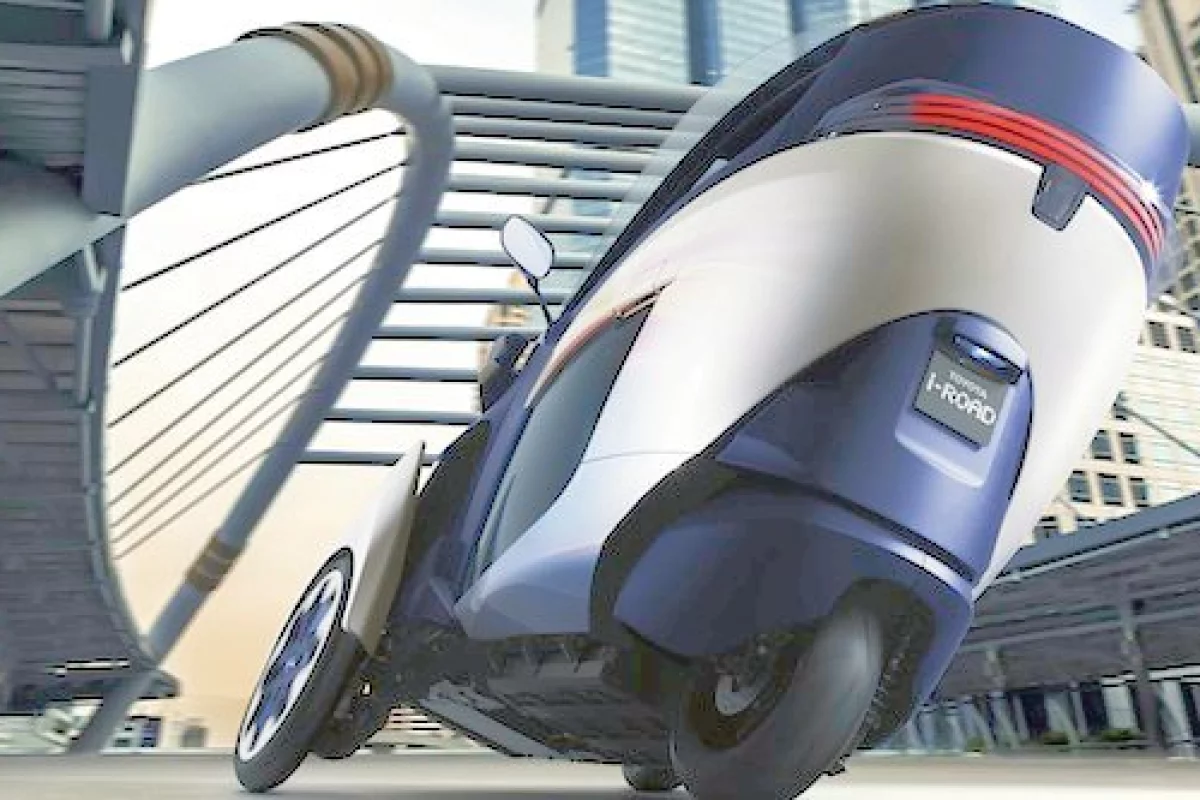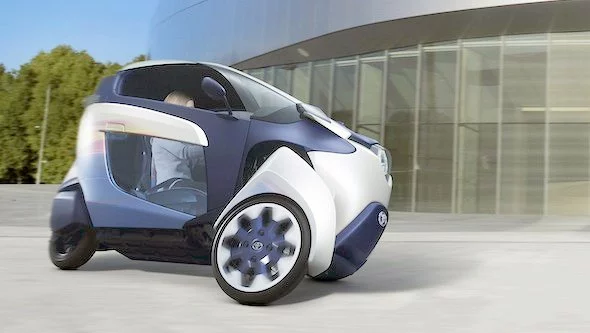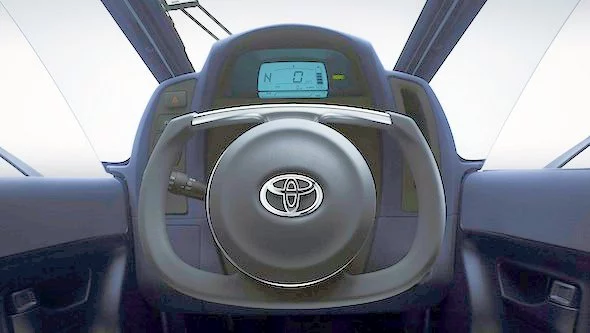Toyota's i-Road three-wheeler concept is set to make it off the drawing board and onto the road. Toyota has announced that a limited production run of the fully enclosed, tilting EV will begin shortly, with initial units being transferred to Toyota's Ha:mo urban transport system trials in Toyota City.
When the i-Road burst onto the scene at this year's Geneva Motor Show, it felt like one of those design concepts that, although innovative and exciting, would probably disappear as do most of that ilk. But now Toyota has put its money where its mouth is, and is producing a short production run, probably numbering in the hundreds, to add to it's prototype Ha:mo urban transport system.
The i-Road is an electric personal mobility vehicle with two in-line seats, that leans into the corners like a motorcycle. With only five horsepower, a top speed of 45 km/h (30 mph), and a range of 50 km (30 mi), the i-Road is aimed squarely at an urban transport market.
Toyota is running its Harmonious Mobility Network (Ha:mo for short) in Toyota City, located in Aichi, Japan. Designed as a system to improve urban transportation by combining private car and public transportation, Ha:mo is aimed at making both urban transportation and the urban culture more people- and community friendly.

The Ha:mo RIDE project is a car sharing system using ultracompact electric vehicles that provides transportation to and within the city center; for example, between a train station and a passenger's workplace. At present the system has ten Toyota COMS personal mobility vehicles and ten Toyota PAS power assisted bicycles. These are available at four stations where they can be rented and returned after use.
In the planned expansion, these numbers will be increased to 100 of each, with 100 i-Roads being added in early 2014. The number of rental stations will be increased to seventeen, providing service at train stations and major public buildings to facilitate quick turnover of the rentals. A rental fee of 20 yen (about 20 US cents) per minute will also be instituted.
Source: Toyota







